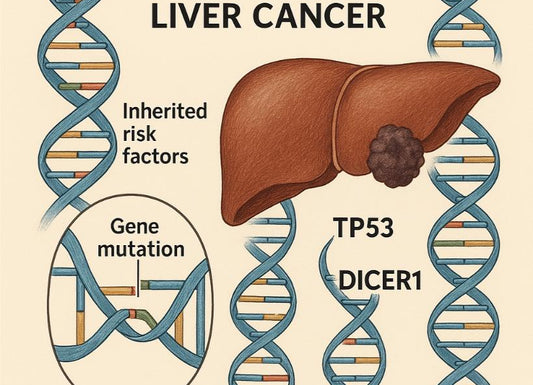Diabetes Insipidus Medication: Types, Uses, and Side Effects Explained
 Written By
Blen Shumiye, MD
Written By
Blen Shumiye, MD

If you’re living with diabetes insipidus (DI), you know how disruptive constant thirst and frequent urination can feel. Unlike diabetes mellitus, which is tied to blood sugar, DI is about your body’s inability to balance fluids.
The good news: medications can help you regain control. This guide explains the main diabetes insipidus medications, how they work, possible side effects, and what you can expect during treatment.
What is diabetes insipidus?
Diabetes insipidus happens when your body either doesn’t make enough of a hormone called vasopressin (antidiuretic hormone, or ADH) or when your kidneys don’t respond to it properly. This makes it harder to conserve water, leading to large amounts of diluted urine.
There are four main types:
-
Central DI – caused by low vasopressin (often due to injury, surgery, or a tumor).
-
Nephrogenic DI – when the kidneys don’t respond to vasopressin.
-
Gestational DI – develops during pregnancy when a placental enzyme breaks down vasopressin.
-
Primary polydipsia – caused by excessive water drinking, not a hormone or kidney issue.
The type of DI you have will guide which medication is best.
To understand how hormones affect your kidneys, see Understanding Creatinine Levels: A Comprehensive Guide.
What medications treat central diabetes insipidus?

Central DI is the most common form and usually responds well to medication.
Desmopressin (DDAVP)
-
What it is: A man-made version of vasopressin.
-
How it helps: Tells your kidneys to hold on to water, lowering urine output.
-
How you take it: Tablets, nasal spray, sublingual melts, or injections.
Benefits:
-
Reduces urination and thirst.
-
Offers flexible dosing options.
-
Improves quality of life.
Possible side effects:
-
Low sodium (hyponatremia).
-
Headaches, mild nausea, or stomach cramps.
-
Nasal irritation (with spray).
Safety tip: Always follow your doctor’s guidance on fluid intake. Drinking too much water while on desmopressin can be dangerous.
What Medications Help with Nephrogenic Diabetes Insipidus?
If you have nephrogenic DI, desmopressin doesn’t work because your kidneys can’t respond to it. Instead, healthcare providers use other strategies to reduce urine output.
Thiazide Diuretics (like Hydrochlorothiazide)
-
Lower urine volume by making your body reabsorb more water.
-
Often combined with a low-salt diet.
-
Side effects: Low potassium, fatigue, dizziness, or gout flare-ups.
Amiloride
-
A potassium-sparing diuretic that blocks sodium channels in the kidneys.
-
Especially useful if your DI was triggered by lithium treatment.
-
Side effects: High potassium levels, nausea, or headaches.
NSAIDs (like Indomethacin)
-
Reduce kidney prostaglandins, improving water balance.
-
Sometimes used with thiazides or amiloride.
-
Side effects: Stomach irritation, kidney strain, and long-term heart risks.
For more on how these medications affect kidney health, explore Revolutionizing Kidney Health: The Impact of At-Home Kidney Tests.
How is Gestational Diabetes Insipidus Treated?

Gestational DI usually responds to desmopressin because, unlike natural vasopressin, it isn’t broken down by pregnancy enzymes. It’s considered safe for both you and your baby when monitored by your care team.
Learn more about monitoring your health during pregnancy in At-Home Health Tests: What You Can Track Safely.
Are There Medications for Primary Polydipsia?
Primary polydipsia isn’t usually treated with medication since it’s related to fluid intake habits or mental health conditions. Treatment focuses on:
-
Behavioral changes to limit excess drinking.
-
Addressing underlying conditions (such as anxiety or psychosis).
-
Supportive counseling.
You can learn more about maintaining fluid balance in Comprehensive Guide to Hydration and Kidney Function.
What Monitoring is Needed with DI Medication?

Medication is only one part of treatment. Ongoing monitoring helps keep you safe:
-
Blood tests: Check sodium, potassium, and kidney function.
-
Urine tests: Measure how much water your body is holding.
-
Imaging: Sometimes needed for central DI.
-
Lifestyle steps: Limit salt, avoid overhydration, and monitor weight changes.
At-home testing can be an excellent complement — see How to Monitor Liver Health with At-Home Test.
Comparing Medications by DI Type
|
Type of DI |
First-line Medication |
Alternatives |
Key Notes |
|
Central DI |
Desmopressin |
None |
Monitor sodium closely |
|
Nephrogenic DI |
Thiazides |
Amiloride, NSAIDs |
Watch electrolytes |
|
Gestational DI |
Desmopressin |
None |
Safe in pregnancy |
|
Primary Polydipsia |
None (behavioral care) |
Psychiatric support meds |
Focus on safe hydration |
What Are the Risks and Precautions?
While DI medications are effective, they can cause complications if not managed carefully:
-
Low sodium (hyponatremia): Most common with desmopressin. Symptoms include headache, nausea, or confusion.
-
Electrolyte changes: Diuretics may lower potassium or sodium.
-
Kidney strain: Especially with NSAIDs.
-
Drug interactions: Lithium, antidepressants, and some blood pressure drugs may interfere.
-
Pregnancy and breastfeeding: Desmopressin is generally safe, but other meds need careful review.
Learn about how medications can affect your kidneys in Understanding Creatinine Levels: A Comprehensive Guide.
What Lifestyle Steps Support DI Treatment?
Alongside medication, small lifestyle changes make a big difference:
-
Drink based on thirst, not habit.
-
Follow a low-salt diet (especially in nephrogenic DI).
-
Wear a medical ID bracelet in case of emergencies.
-
Keep regular check-ins with your healthcare provider.
For overall well-being tips, see Doctor-Approved Tips to Improve Kidney Health Naturally.
Living Well with Diabetes Insipidus
With the right plan, most people living with DI can manage symptoms and live full lives. The key is staying consistent with treatment, monitoring lab results, and knowing the warning signs of low sodium or dehydration.
Frequently Asked Questions
1. What is the main medication used for diabetes insipidus?
The most common medication is desmopressin (DDAVP), a synthetic form of vasopressin. It’s especially effective for central and gestational diabetes insipidus.
2. How does desmopressin work?
Desmopressin signals the kidneys to hold onto water, reducing urine output and easing constant thirst.
3. Can nephrogenic diabetes insipidus be treated with desmopressin?
No. In nephrogenic DI, the kidneys don’t respond to vasopressin or desmopressin. Instead, doctors may prescribe thiazide diuretics, amiloride, or NSAIDs.
4. What are the side effects of DI medications?
-
Desmopressin: low sodium, headache, nausea, nasal irritation.
-
Thiazides: low potassium, dizziness, gout flare-ups.
-
Amiloride: high potassium, nausea.
-
NSAIDs: stomach irritation, kidney strain.
5. Is it safe to drink as much water as I want while on medication?
No. Drinking too much water while on desmopressin can cause dangerous low sodium levels (hyponatremia). Always follow your care team’s fluid recommendations.
6. Can DI medications be used during pregnancy?
Yes. Desmopressin is safe and effective for gestational diabetes insipidus, unlike natural vasopressin, which breaks down in pregnancy.
7. Do children with DI take the same medications as adults?
Yes, but doses are carefully adjusted, and children require close monitoring by a pediatric specialist.
8. Can diabetes insipidus be cured?
-
Gestational DI often resolves after pregnancy.
-
Other types usually require lifelong management with medications and lifestyle adjustments.
9. How often will I need monitoring?
Regular blood and urine tests are important to check sodium, potassium, kidney function, and medication response.
10. What lifestyle changes can support my medication?
-
Drink according to thirst, not habit.
-
Reduce salt intake (especially with nephrogenic DI).
-
Keep a medical ID bracelet.
-
Follow up with your doctor regularly.
Conclusion
Diabetes insipidus medication is essential for keeping symptoms under control and preventing complications. Desmopressin is the go-to treatment for central and gestational DI, while thiazides, amiloride, and NSAIDs are used for nephrogenic DI.
With careful monitoring, healthy habits, and support from your care team, you can manage DI confidently.
Want to take a more active role in your health? Explore Ribbon Checkup’s resources and at-home tests to better understand your overall wellness.
Related Resources
References
and, D. (2021). Diabetes Insipidus. National Institute of Diabetes and Digestive and Kidney Diseases; NIDDK - National Institute of Diabetes and Digestive and Kidney Diseases. https://www.niddk.nih.gov/health-information/kidney-disease/diabetes-insipidus
Central Diabetes Insipidus (CDI): Symptoms, Diagnosis & Treatment. (2023, September 5). Cleveland Clinic. https://my.clevelandclinic.org/health/diseases/23515-central-diabetes-insipidus-cdi
Diabetes Insipidus. (2025, January 24). City of Hope. https://www.cityofhope.org/clinical-program/diabetes/types/diabetes-insipidus#:~:text=Diabetes Insipidus Treatment&text=The main treatment for diabetes,may return with future pregnancies.
Diabetes insipidus - Diagnosis and treatment - Mayo Clinic. (2025). Mayoclinic.org; https://www.mayoclinic.org/diseases-conditions/diabetes-insipidus/diagnosis-treatment/drc-20351274
Pinto, T. E., Arati Mokashi, & Cummings, E. A. (2021). Central diabetes insipidus and pain medications – a risky combination. Clinical Diabetes and Endocrinology, 7(1). https://doi.org/10.1186/s40842-021-00124-9

Dr. Blen is a seasoned medical writer and General Practitioner with over five years of clinical experience. She blends deep medical expertise with a gift for clear, compassionate communication to create evidence-based content that informs and empowers. Her work spans clinical research, patient education, and health journalism, establishing her as a trusted voice in both professional and public health spheres.



